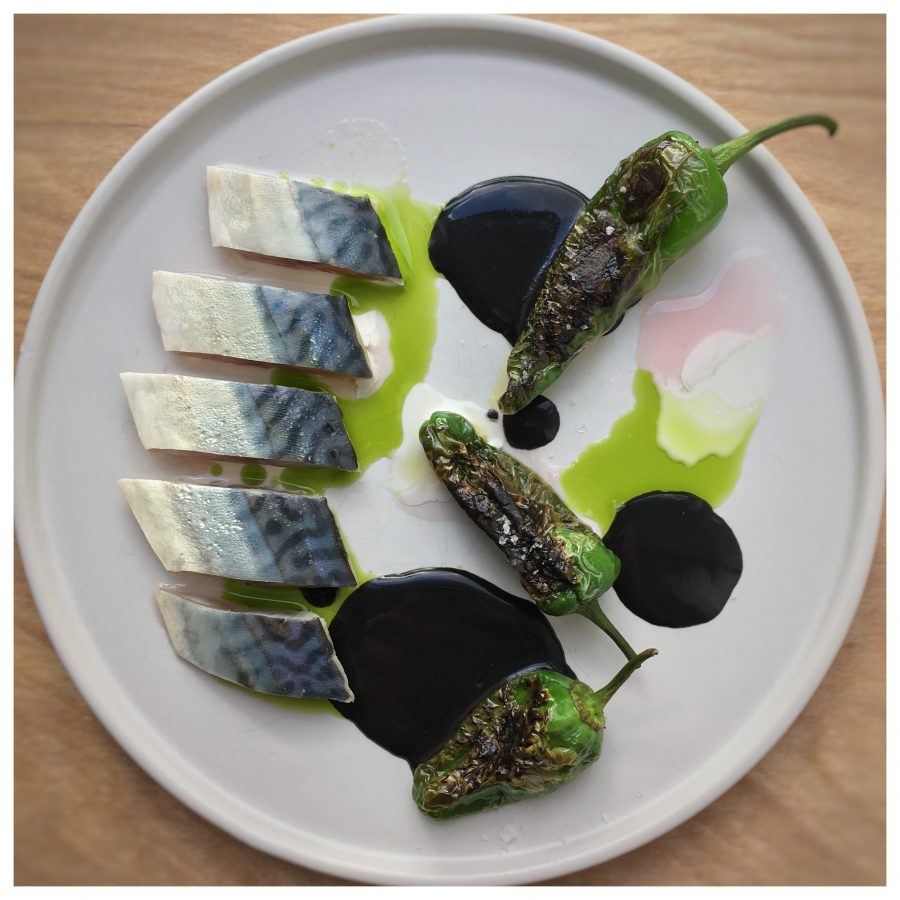
Roy Revie from Stonelands Kitchen is a chef by profession and a keen forager. He has always foraged for ingredients to add that little something extra to his dishes. He share a favourite recipe of his using foraged ingredients. Roy will be hosting a range of events at The Scottish Wild Food Festival.
For the mackerel
- Think of a place by the sea where you have seen people fishing in the summer, work out when high tide is, and go there around that time and catch some mackerel (1 mackerel feeds 2 people in this recipe). Gut and fillet them as soon as possible – removing the bones.
- Sprinkle the mackerel fillets liberally with sea salt and leave for 1 hr in the fridge. Remove, shake of excess salt, and place fillets in a bowl or tray deep enough to submerge them in liquid. Heat a mixture of 3 parts water to 1 part sherry vinegar in a pan to 40 degrees C, then pour it over the fillets to cover. Return to fridge and leave for 1 hr.
- Remove fillets from pickling liquid, and cut up into medium sized pieces – they are ready to serve.
For the lovage oil
- Pick the leaves from a large bunch of Scots lovage (if you can’t find any, you can substitute parsley, maybe mixed with some alexander seeds if you can find any of them). Blanche the leaves in boiling water for about 1 minute, until they become tender, then transfer to ice water to stop cooking and maintain bright green colour. Wrap leaves in paper towel or cheese cloth and squeeze as much liquid as possible from them. The aim is a bundle of blanched, vivid green, dry leaves.
- Put your leaves in a blender with 4 times as much oil by weight (I like to use a mix of 80% sunflower oil and 20% extra virgin rapeseed oil) and blend until a smooth green paste is formed. Leave this paste in the fridge overnight and in the morning, strain through a coffee filter to remove the solids. You should have a vivid green oil with the flavour of the herbs (you can use this same technique with most soft herbs).
For the rhubarb juice
- Blend 5 of chopped rhubarb until a puree is formed, pour the puree into a sieve and press out the juice (or, if you have a juicer, use it!). The juice will look muddy, wait a while for the dark solids to settle to the bottom, then pour the liquid off the top through a coffee filter. You should now have lovely pink, sour, clean tasting rhubarb juice.
- Weigh out 0.5% of the weight of the juice of xantham gum, and blend into the juice (this thickens it slightly to stop it running all over the plate)
For the almond milk
- Soak 100g of blanched in cold water overnight, then drain
- Blend almonds, adding as much water is required for the mixture to churn smoothly through your blender (but no more!)
- Squeeze almond pulp in a muslin cloth to extract almond milk (keep the pulp fro putting in cookies or something)
For the squid ink sauce
- Heat 300ml of good quality fish stock in a pan (I used mussel stock), add 150g of good quality, toasted, sourdough bread and leave to soak.
- Add to blender with 2 roasted garlic cloves, a teaspooon of yarrow flowers, a sachet of squid ink, blend until very smooth.
- With the blender running, slowly drizzle in about 35ml of extra virgin rapeseed oil until the black sauce takes on a brilliant sheen.
- Pass sauce through a fine sieve to remove any lumps, season to taste, and keep warm in a small pan
TO PLATE:
Put a few pools of squid ink sauce, almond milk, lovage oil, and rhubarb juice around the plate. On one side place a sliced fillet of mackerel, drizzle with more rhubarb juice. On the other add a few fried padron peppers, seasoned liberally with malden salt. Enjoy.
